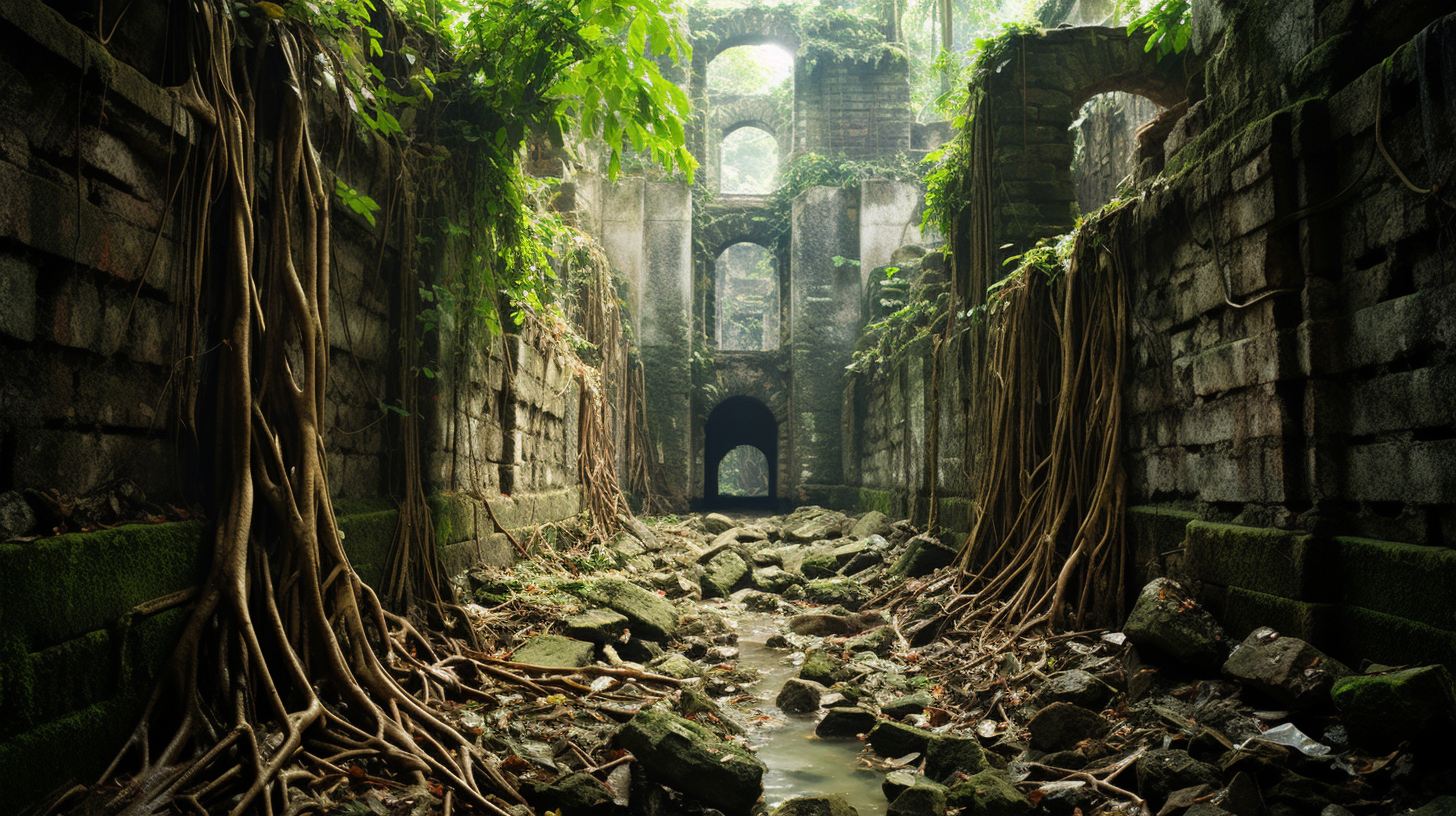Amidst the husks of a world that once was, where skyscrapers have crumbled and the skeletal remains of once bustling metropolises stand as monuments to human hubris, nature is staging a silent but powerful resurgence.
The streets, where the echo of footsteps and the clamor of commerce have long since dwindled, are now veins of green, rich with wildflowers and crawling vines that breach the asphalt, reclaiming inch by inch the lands that were their ancestral homes. In this desolate setting, a new ecology thrives, one that is untamed and brutally indifferent to the decrepit symbols of human civilization it envelops.
Where once the air was thick with smog and the cacophony of car horns, now there is the soft whisper of leaves and the murmur of wind through the empty shells of skyscrapers. It’s a landscape both surreal and sobering, where one can’t help but feel the weight of an era lost and the indomitable resilience of Earth.
‘Mother Nature is not just surviving; she’s staging a coup,’ observes Dr. Emilia Torres, a leading ecologist who studies the reclamation of urban spaces by natural forces. ‘These are not the gentle gardens of man, but the wilds, untouched and untouchable.’
These transformations are not confined to forsaken urban landscapes alone. Across the globe, coastal areas that once featured luxury waterfronts now lay surrendered to the tides that have risen relentlessly, carving out a domain where marine life thrives amidst the submerged ruins of the past’s excess.
In this dystopian tableau, one might find an eerie beauty, yet it’s a stark reminder of the consequences of unchecked progress and environmental disregard. It’s here we find the Earth rewriting its narrative, scrubbing clean the slate of human impact with a palette of wild flora and fauna. This is a world reverting to a primeval state, a clear display of nature’s ability to endure and adapt even through the marring effects of anthropogenic change.
Stories of wolves roaming where subway trains once rushed and of deer grazing on the negligent overgrowth of suburban backyards are not just post-apocalyptic fiction; they are emerging as the threads of reality in this new era of ecological renaissance.
The lesson is clear and the message, though unspoken, is potent: the world does not belong to humankind alone. Rather, humanity is but a layer in the deep, geological strata of Earth’s history—our chapter both brief and, as it’s becoming increasingly clear, reversible.
As such, we are compelled to gaze upon these scenes not as romantic backdrops for a return to Eden but as a sobering tableau vivant of our potential future – stark warnings etched out in the rebirth of wild places. As we observe these new roots unearthing from old ruins, it’s crucial to recognize them for what they truly are: not a testament to our legacy, but a powerful clarion call for change in our present.
Yet, this chronicle of reclamation does not sing of hope; it hums a dirge for what has been lost and may never again be found. Nature’s reawakening in the midst of our decline is but a small silver lining in the vast, looming clouds of an uncertain and dystopian future.
‘We must take heed of this resilient transformation,’ cautions Dr. Torres, ‘for it is not a gentle reminder, but a jarring portent of the durability of life amidst the ruins of human conceit.’
